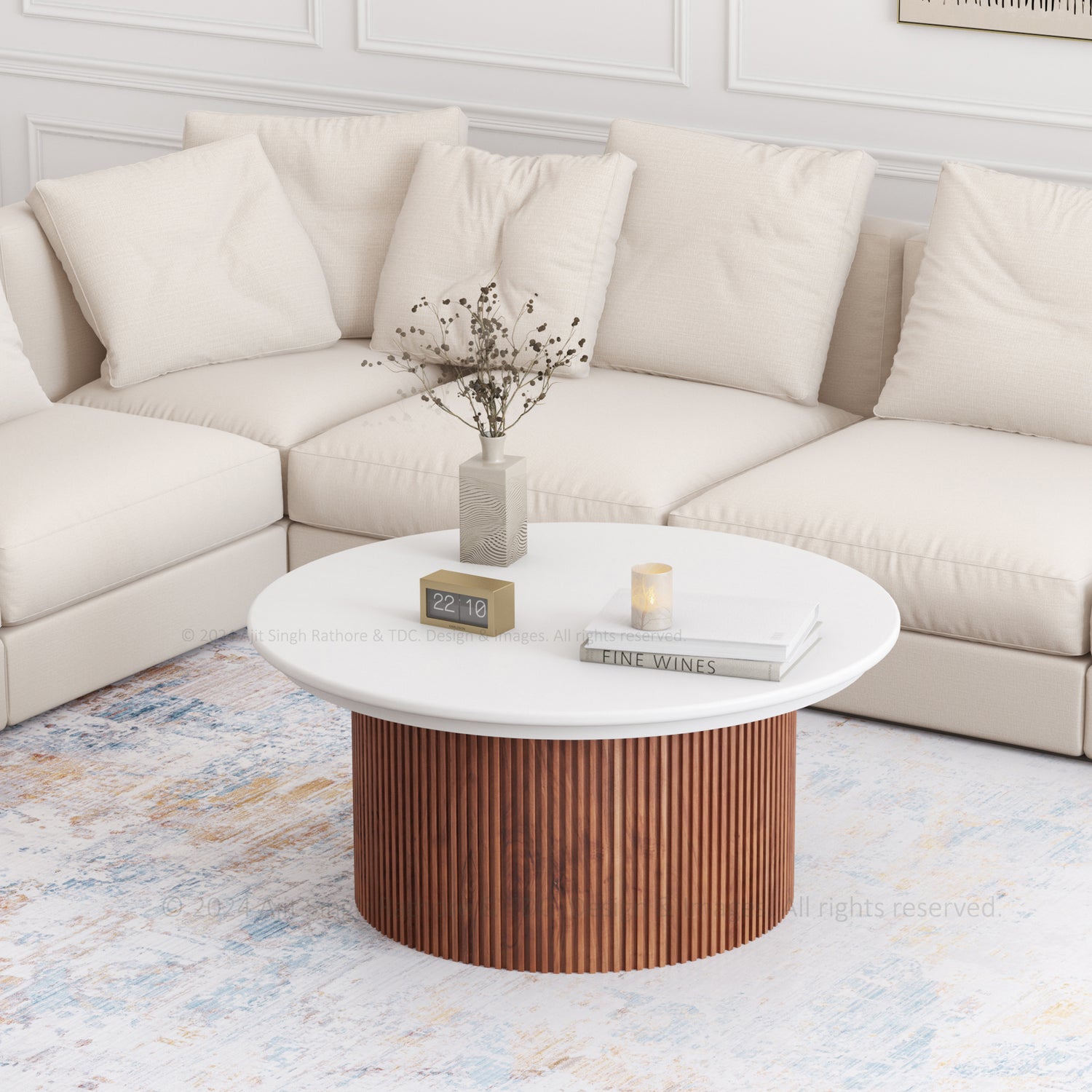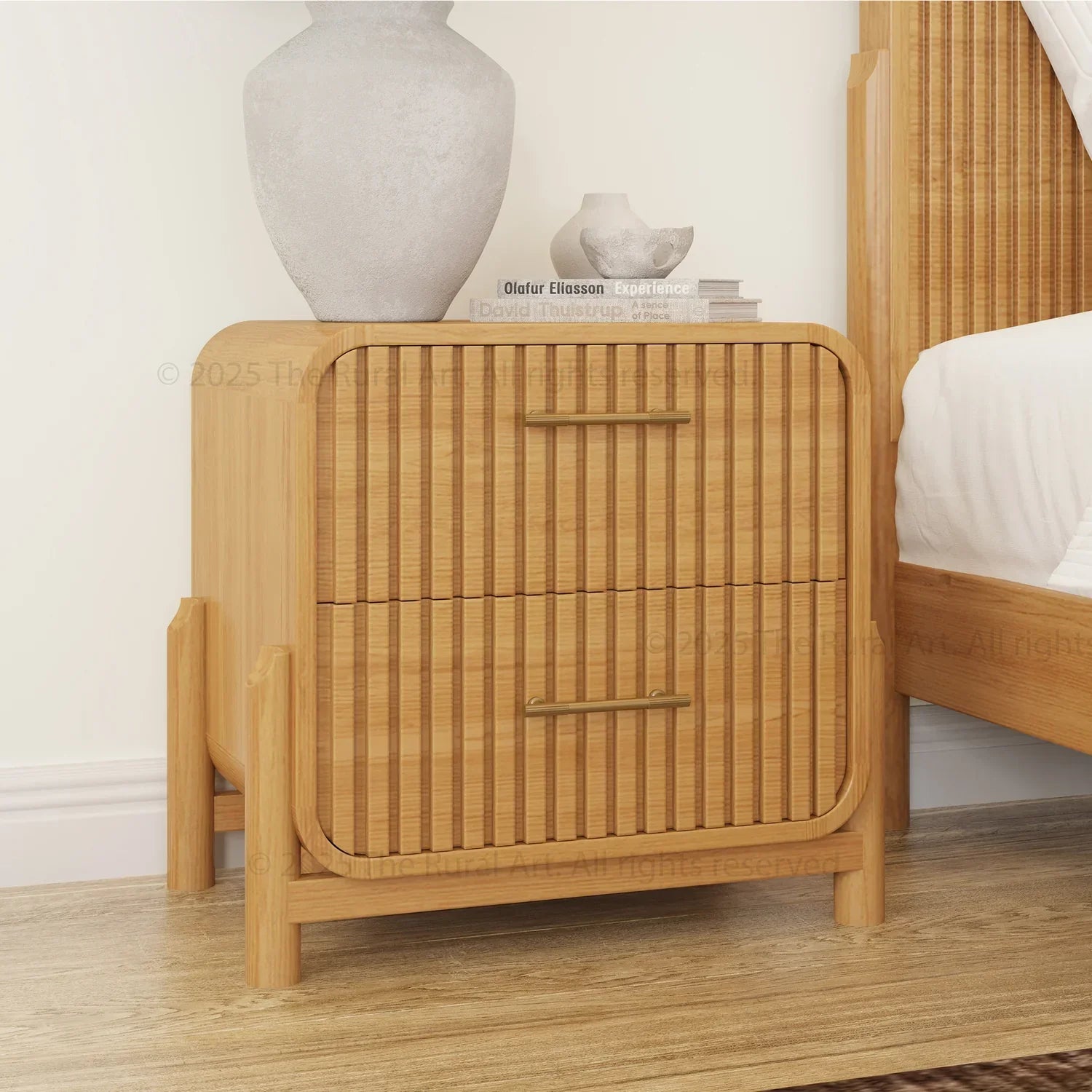When shopping for premium furniture, whether it's an extra-large king-size bed or a cozy seating solution, buyers often assume the label “solid wood” guarantees durability and authenticity. Unfortunately, not all furniture marketed as solid wood truly meets these standards. With the rise of engineered wood, veneers, and laminates, it can be tricky to identify genuine pieces from imitations.
Understanding the subtle cues can save you from investing in furniture that won’t last.
1. Unusual Weight and Feel
One of the first clues that furniture might not be authentic is its weight. True solid wood pieces, such as those crafted from teak, mango, or Indian rosewood, carry a noticeable heft due to their density. A lightweight real wood dining set may look convincing at first glance, but if it feels unexpectedly light, it could be constructed from particleboard, MDF, or hollow cores.
Genuine handcrafted wooden furniture also has a tactile warmth. Run your hand across the surface of a solid teak table, and you’ll notice subtle textures and natural imperfections that machine-made veneers cannot replicate. This sensory experience is a hallmark of craftsmanship and quality.
2. Inconsistent Grain Patterns
Solid wood has unique, irregular grain patterns that are impossible to replicate exactly. If the wood surface appears too uniform or repetitive, it might be a laminate or a veneer. For example, some wooden coffee tables imitate exotic grains but fail to offer the depth and richness of real wood fibers.
Check the edges and corners of the furniture. In authentic pieces, the grain flows seamlessly, while in faux solid wood, patterns may abruptly end or wrap unnaturally. These inconsistencies are subtle but telltale signs that the furniture isn’t 100% solid wood.
3. Visible Joints and Seams
The construction method of furniture reveals a lot about its authenticity. Real handcrafted wooden furniture is typically joined using traditional techniques such as dovetail, mortise-and-tenon, or tongue-and-groove joints. These joints are strong, durable, and often visible on drawers or structural supports.
Conversely, cheaper imitations rely on nails, staples, or glue that can be spotted at close inspection. For example, an extra-large king-size bed with easily removable slats or flimsy underframes may lack these robust joinery methods, suggesting a composite or engineered core beneath a veneer.
4. Surface Finishes and Coatings
The finish on solid wood is usually smooth, natural, and enhances the wood’s texture without hiding it. If the surface appears overly glossy, plasticky, or uniform, the furniture might be covered with a synthetic coating rather than natural polish or oil.
Take a close look at wooden coffee tables with high-gloss finishes. While attractive, an unnaturally shiny surface can indicate veneer over a lower-quality core. Authentic solid wood will display slight variations in color and sheen, reflecting its organic origin and adding depth to the furniture’s overall character.
5. Price Points That Seem Too Good to Be True
While quality craftsmanship can be an investment, sometimes a price that seems “too good to be true” is a warning sign. Genuine solid wood furniture, like the handcrafted pieces at The Rural Art, requires skilled labor and premium materials, which are naturally reflected in the price.
For example, a real wood dining set sold at a fraction of the typical market value may use engineered materials disguised as solid wood. Buyers should weigh price against features like wood type, joinery, finish, and overall durability to make an informed decision.
The Importance of Choosing Authentic Solid Wood Furniture
Investing in kind of real wood furniture ensures longevity, sustainability, and timeless style. Pieces crafted from teak, mango, acacia, or Indian rosewood are not only durable but also develop a rich patina over time, enhancing their beauty. Unlike synthetic or composite alternatives, solid wood allows for repairs, refinishing, and even customization without compromising integrity.
Products like the Carmel Bed or Hollywood Floating Bed from The Rural Art exemplify this ethos. Their meticulous craftsmanship, thoughtful design, and rich finishes demonstrate why authenticity and quality are paramount when selecting furniture for long-term enjoyment.
Tips for Verifying Solid Wood Furniture
-
Check Labels and Documentation: Trusted manufacturers often provide detailed information about the type of wood used in each piece. Look for certifications or product descriptions that confirm the wood species, such as teak, mango, acacia, or Indian rosewood, to ensure authenticity. Verified documentation can also indicate the furniture’s origin and whether it follows sustainable and eco-friendly practices.
-
Inspect Undersides and Drawers: Many imitations hide inferior materials beneath veneer surfaces. By examining the undersides of tables, drawers, or the back panels of cabinets, you can often see the core material, construction methods, and finish quality, which reveal whether the piece is truly solid wood. It typically has continuous grain patterns and consistent finishes, even in hidden areas.
-
Test Weight and Solidity: Genuine real wood furniture has a noticeable heft due to its density, while engineered or hollow-core pieces feel lighter. Gently lift or press on different sections to gauge sturdiness; wobbling, creaking, or hollow sounds can indicate lower-quality construction. This test helps you identify items that may wear out quickly with regular use.
-
Smell the Wood: Real wood has a distinctive natural scent that varies depending on the species, such as the earthy aroma of mango wood or the rich scent of teak. Artificial veneers and laminates usually have a chemical or plastic-like smell, which can be a quick giveaway of imitation materials.
-
Ask About Craftsmanship: Handcrafted furniture generally indicates higher quality and attention to detail compared to machine-assembled pieces. Inquire about the joinery techniques, finishing processes, and artisans involved in creating the furniture.

Conclusion
Identifying genuine solid wood furniture from imitations requires attention to detail and knowledge of craftsmanship cues. From grain patterns and joinery to finish quality and overall weight, each element provides insight into a piece’s authenticity. By learning these signs, buyers can confidently choose furniture that offers both beauty and durability, ensuring a long-lasting investment in their home interiors.
The Rural Art consistently showcases furniture that reflects genuine solid wood quality, blending timeless design with meticulous craftsmanship. Understanding these hidden signs empowers you to make informed decisions and enjoy furniture that elevates your living spaces for years to come.






